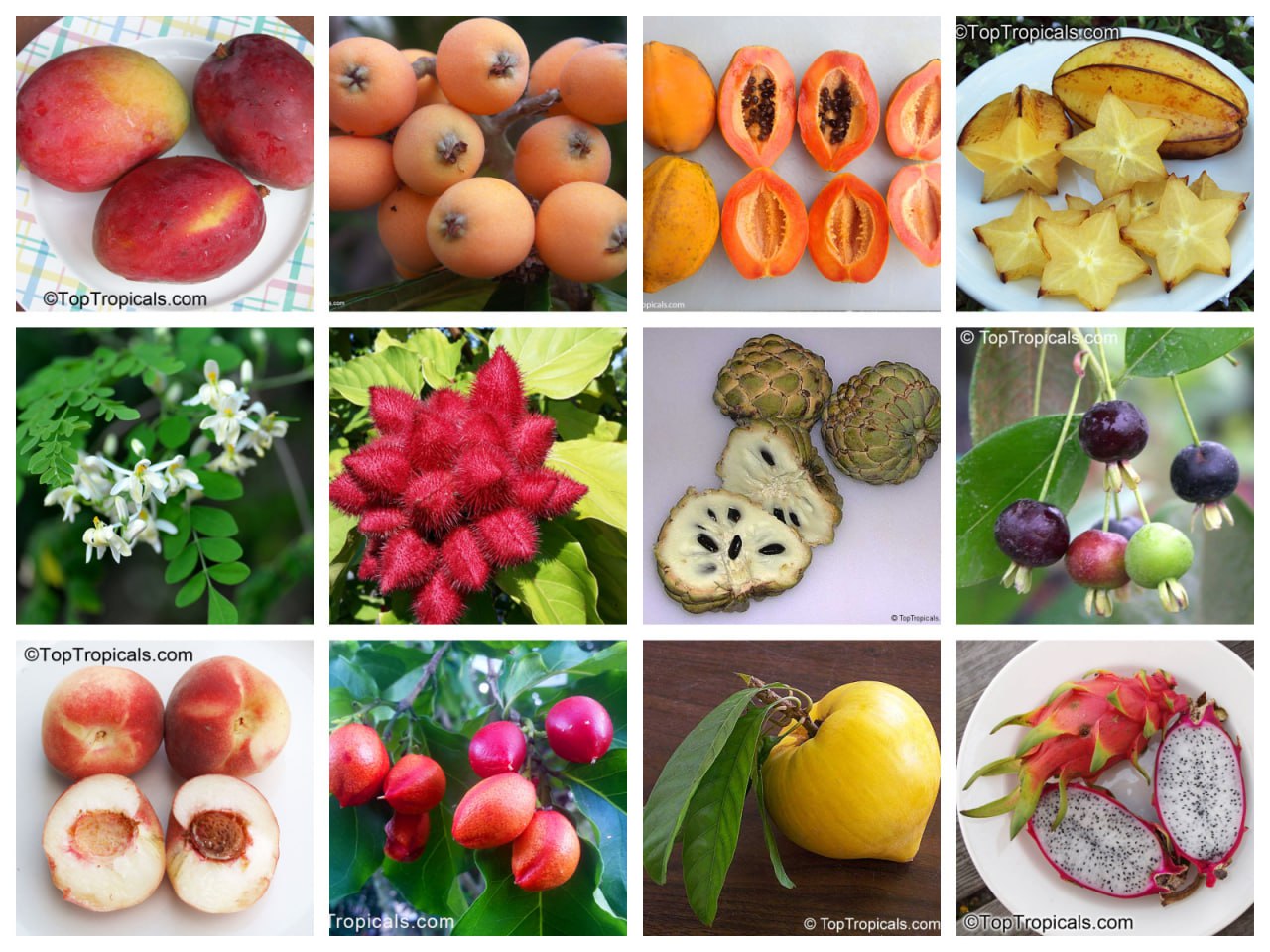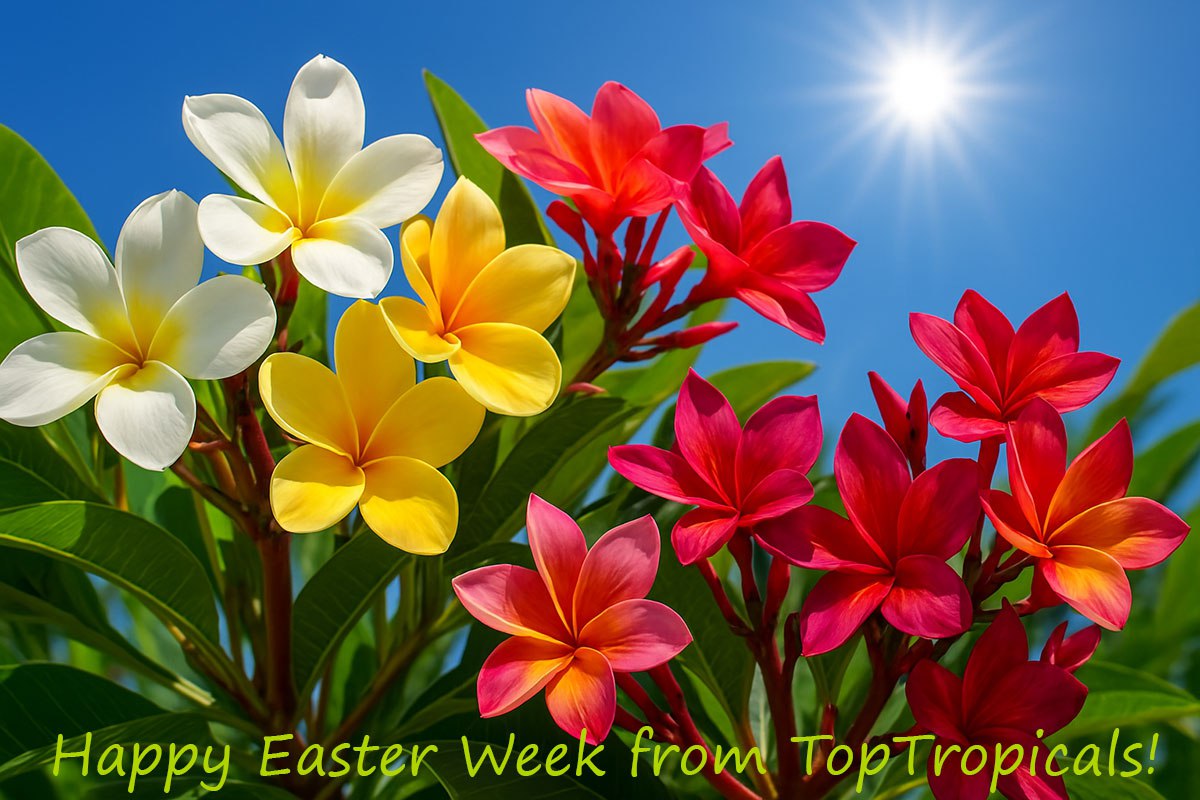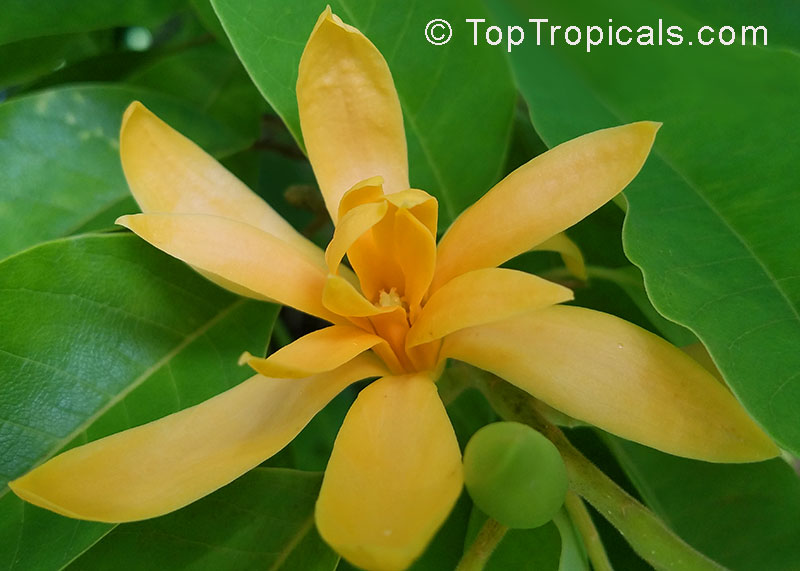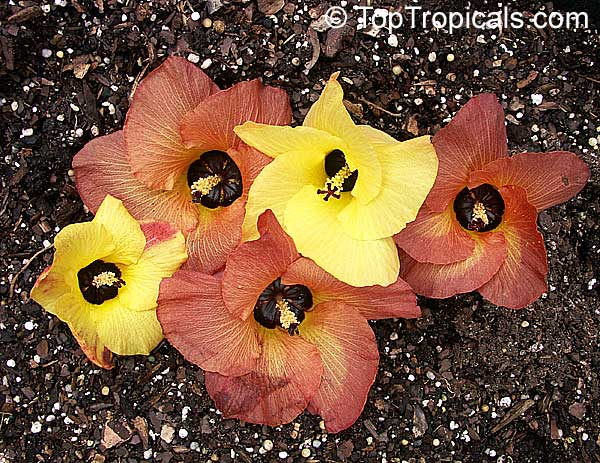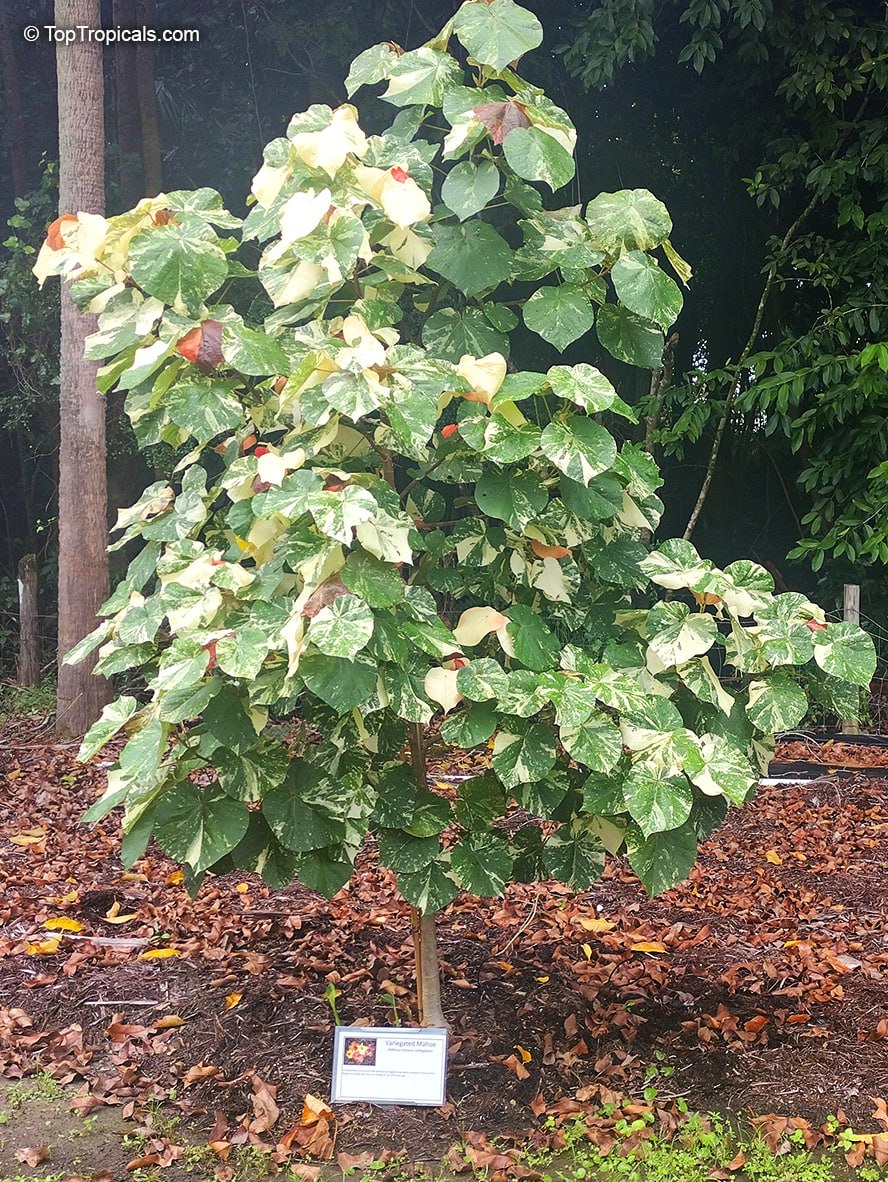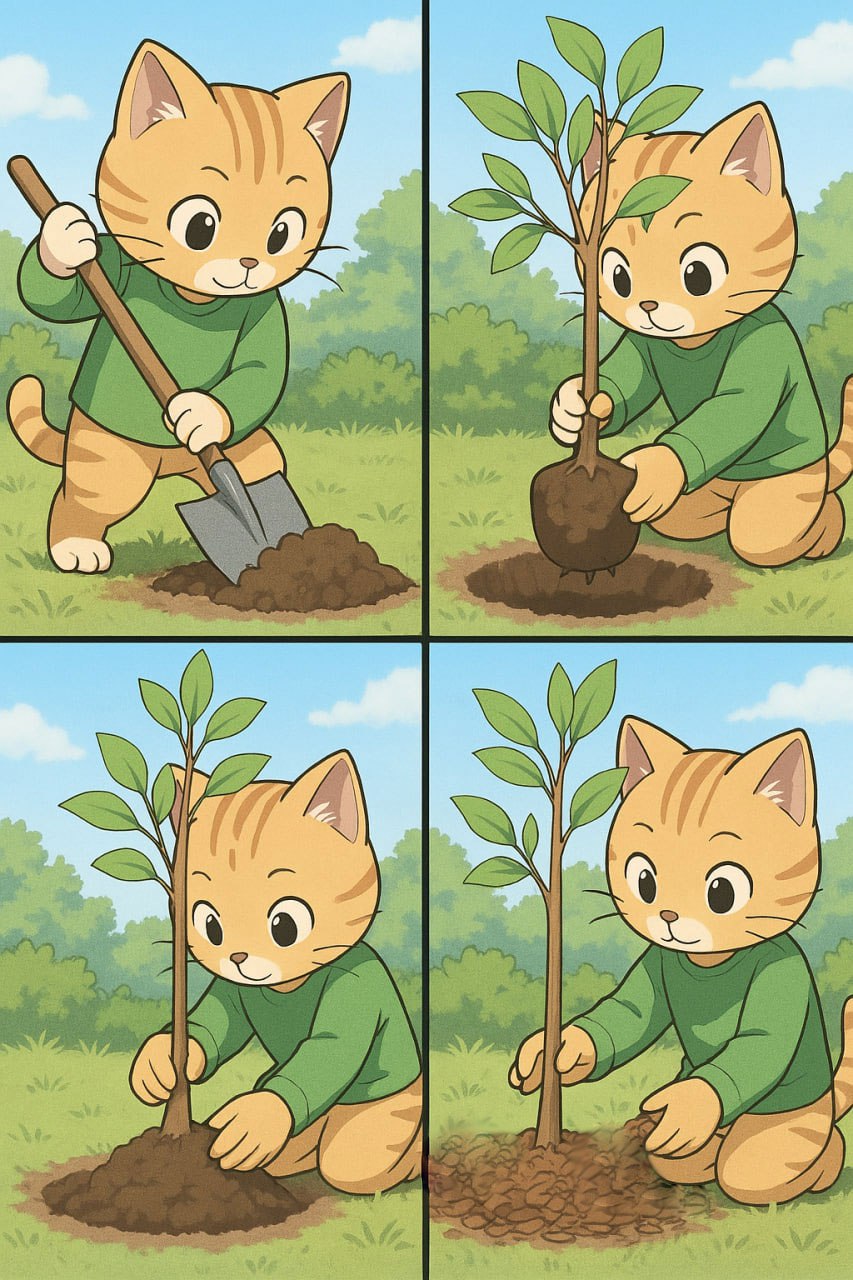Garden Blog - Top Tropicals
Spooning
"Spooning is always a good idea, unless you're a fork."
🐈 PeopleCats.Garden
#PeopleCats
🔴 Join 👉 TopTropicals
See the Difference: Grow Plants That Protect Your Vision
Your eyes work hard every day - give them the nutrition they deserve!
These tropical fruits and plants are rich in Vitamin A and beta-carotene, known to support clear vision, retinal health, and even help prevent age-related eye decline. Grow them in your garden and harvest real, living eye care.
👁 Top 12 Eye-Supporting Fruit and Plants (Vitamin A - Retinol)
🟡 Mango - Packed with beta-carotene, which your body converts into Vitamin A to support sharp, healthy vision.
🟡 Loquat - Naturally rich in Vitamin A, known for supporting retina and eye tissue health.
🟡 Papaya - A tasty source of beta-carotene, great for protecting your eyes and immune system.
🟡 Carambola (Starfruit) - Offers a dose of Vitamin A, beneficial for maintaining clear eyesight.
🟡 Moringa - A leafy powerhouse loaded with beta-carotene that helps support visual health.
🟡 Annatto - High in carotenoids, especially bixin, which may support eye health and clarity.
🟡 Annona - Contains antioxidants, including beta-carotene, to help nourish your eyes.
🟡 Eugenia Cherry (Cherry of the Rio Grande, Brazilian Cherry, Surinam Cherry, Pitomba) – A sweet fruit rich in Vitamin A, promoting overall eye wellness.
🟡 Peach - Supports both skin and eye health with its naturally high Vitamin A content.
🟡 Peanut Butter Fruit - Contains beta-carotene, a powerful nutrient for eye and vision support.
🟡 Canistel (Eggfruit) - Extremely high in beta-carotene, offering deep support for vision and skin.
🟡 Dragon Fruit - Offers beta-carotene and antioxidants that may protect your retinas and night vision.
📚 Learn more about health benefits of tropical plants:
TROPICAL FRUIT HEALTH BENEFITS GUIDE - Part 1 and Part 2
🛒 Shop Vision-Boosting Plants - buy tropical fruit trees for your eye health
#Food_Forest #Discover #Remedies
🔴 Join 👉 TopTropicals
Plant This and Let the Sweetness Take Over -
Lonicera japonica - Japanese Honeysuckle
🛒 Get Sweet Honeysuckle for your garden today and let the scent do the talking!
#Perfume_Plants #Hedges_with_benefits
🔴 Join 👉 TopTropicals
Hop into Easter Week Sale - Plant Joy and Save!
🐣 Happy Easter Week, Tropical Gardeners!
🐣 Easter is about hope, renewal, and starting fresh - just like your garden! Whether you're planting your first tree or adding a rare gem to your edible jungle, now is the perfect time.
Spring is here - and so is your chance to grow your own magic. Eggs may be pricey... but guess what? You can grow your own food instead! Plant a fruit tree this Easter and watch it hatch into something better than chocolate - like juicy Mangoes, Dragon Fruits and Carambolas, sweet Papayas and Bananas, healthy Avocados and Jackfruits or your very own exotic Sugar Apples hanging from the branches!
- 🛍 Get 15% OFF everything in our store using this code:
🛍 EASTERWEEK 🛍
Min order $150, excluding S/H. Exp. Exp 4-20-25.
🐰 Hop to it! Don't put all your eggs in one basket... unless it's a basket full of fruit trees of flowering shrubs. Let's plant some hope together - one tree at a time.
🛒 Plant Your Easter Joy!
#Discounts
🔴 Join 👉 TopTropicals
Date:
How to Plant a Perfume Hedge
And What Does a Champaka Tree Look Like?
Practical Growing Guide
Photo above: Magnolia champaka (Joy Perfume tree) in landscape. This tree was planted 3 years ago from a 7-gal pot. The tree is now 5 years old from seed and has been covered with flowers for two seasons in a row. Check out short video.
Q: How big does the Champaka tree grow, tall and wide? And what is the growth habit? I'm thinking of planting a perfume hedge along my property with several of these beautiful trees (8-10 trees). How far apart should I plant them and what container size should I start with? And how soon will they start blooming?
A: Magnolia champaka, or Joy Perfume tree is the most desirable perfume tree for Southern landscapes - and a Signature Plant of Top Tropicals! You can see several of these stunning trees around our B-Farm in Sebring, including the one right by the office front door.
The flowers are used to make the world's most expensive perfume, Joy - and they smell like fruity bubble gum... you won't be able to stop sticking your nose in this flower! The Joy Perfume Tree blooms on and off year-round.
The lemon-lime, light green leaves are lush, soft, and tropical-looking, with a unique and beautiful color.
The Champaka tree has a striking columnar shape and becomes very bushy and full when established - whether in a pot with a proper fertilizer program or in the ground. In Florida, mature trees can reach 20-25 ft tall, although in true tropical environments they may grow much taller. Check out short video of a mature tree. It doesn't get very wide, and if you are planning to plant several trees as a perfume hedge, you can space them as close as 10 ft apart. This tree - light green, fragrant, evergreen, fast-growing, bushy, and dense - makes the perfect perfume hedge!
Champaka trees begin flowering within 2-3 years from seed. Singing birds love this tree and often build nests in its bushy crown during spring. The tree is relatively cold-hardy and can withstand light freeze for short periods once established. Just make sure to provide regular watering.
We have beautiful Champaka trees in all sizes:
3 gal pot:
3-4 ft tall - ready to bloom within a year, can be shipped
7 gal pot: 5-6
ft tall - ready to bloom, can be shipped
15 gal pot: 7-8
ft tall - have already bloomed, pick up or delivery*
25 gal pot: 10
ft tall - have already bloomed, pick up or delivery*
* Free delivery for qualified orders - contact us for estimate
Plant Your Perfume Hedge Today!
Imagine walking along a path lined with Champaka trees - Joy -fragrant blossoms drifting through the air, lush green leaves swaying gently, and birds singing above. With just a few trees, you can create your own heavenly hedge of joy and fragrance. Let your garden bloom with elegance, beauty, and the world's most luxurious scent!
Date:
Hop into Easter Week Sale - Plant Joy and Save!
Happy Easter Week, Tropical Gardeners!
Spring is here - and so is your chance to grow your own magic. Eggs may be pricey... but guess what? You can grow your own food instead! Plant a fruit tree this Easter and watch it hatch into something better than chocolate - like juicy Mangoes, Dragon Fruits and Carambolas, sweet Papayas and Bananas, healthy Avocados and Jackfruits or your very own exotic Sugar Apples hanging from the branches!
Easter is about hope, renewal, and starting fresh - just like your garden! Whether you're planting your first tree or adding a rare gem to your edible jungle, now is the perfect time. Get 15% OFF everything in our store using this code:
EASTERWEEK
Min order $150, excluding S/H. Exp. Exp 4-20-25.
Hop to it! Don't put all your eggs in one basket... unless it's a basket full of fruit trees of flowering shrubs. Let's plant some hope together - one tree at a time.
Feet up - worries down
"Hands up if you think naps should be mandatory. Feet up - worries down!"
🐈 PeopleCats.Garden
#PeopleCats
🔴 Join 👉 TopTropicals
Why do the Chinese drink tea?
🍃 It actually has to do with the Chinese theory of the five elements - wood, metal, fire, water, and earth:
木 金 火 水 土
🍃 Tea comes from a plant - Camellia sinensis - the Tea Leaf Tree - that is used to make all true teas: green, black, white, and oolong. The Tea Tree contains the element of wood (木) 🌳
🍃 When it's roasted in a cast-iron pan, it gains the element of metal (金)
🍃 Then it's dried over fire, adding the element of fire (火) 🔥
🍃 When it's brewed with boiling water, the element of water enters (水) 💦
🍃 Finally, tea is poured into a clay vessel, symbolizing the element of earth (土) 🍯
🍃 In this way, all five elements - wood, metal, fire, water, and earth - come together in a single cup.
🍃 The plant grows slowly and can thrive in containers or frost-free gardens with sun to semi-shade.
🛒 Grow your own tea
📚Learn more from previous posts:
Tea facts
How to grow your own tea?
Where does the tea come from?
Instructions how to make tea from tea leaves (PDF)
#Food_Forest #Remedies #Fun_facts
🔴 Join 👉 TopTropicals
The Tree Everyones Talking About: Variegated Mahoe
🌳 Hibiscus tiliaceus Variegatum is the must-have tree of the year - and for good reason! This stunning, fast-growing beauty delivers shade in just one season, with a more compact, umbrella-like shape than its wild cousin, the standard Mahoe (that grows into a very large tree).
🌳 Variegated Mahoe's eye-catching foliage is a show in itself: splashes of red, white, green, and pink create a living kaleidoscope. The blooms are just as magical - starting yellow and deepening to orange and red as they age.
🌳 Perfect for Southern gardens and hot-climate landscapes, the Variegated Mahoe is low-maintenance, colorful, cool and cooling, and endlessly rewarding. Everyone wants it, and once you see it, you'll understand why!
🛒 Add color, shade, and tropical flair to your garden with Variegated Mahoe
#Trees #Discover
🔴 Join 👉 TopTropicals
The Tree Everyones Talking About: Variegated Mahoe
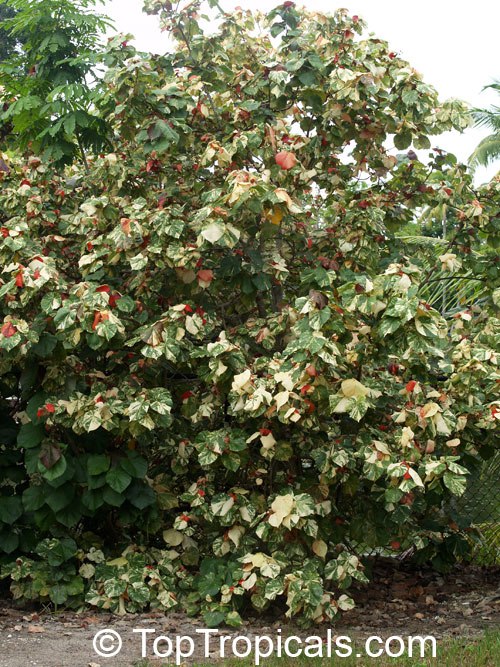
Hibiscus tiliaceus Variegatum - Variegated Mahoe

Hibiscus tiliaceus Variegatum - Variegated Mahoe flowers

Hibiscus tiliaceus Variegatum - Variegated Mahoe leaves

Hibiscus tiliaceus Variegatum - Variegated Mahoe young tree
- 🌳 Hibiscus tiliaceus Variegatum is the must-have tree of the year - and for good reason! This stunning, fast-growing beauty delivers shade in just one season, with a more compact, umbrella-like shape than its wild cousin, the standard Mahoe (that grows into a very large tree).
- 🌳 Variegated Mahoe's eye-catching foliage is a show in itself: splashes of red, white, green, and pink create a living kaleidoscope. The blooms are just as magical - starting yellow and deepening to orange and red as they age.
- 🌳 Perfect for Southern gardens and hot-climate landscapes, the Variegated Mahoe is low-maintenance, colorful, cool and cooling, and endlessly rewarding. Everyone wants it, and once you see it, you'll understand why!
🛒 Add color, shade, and tropical flair to your garden with Variegated Mahoe
#Trees #Discover
🔴 Join 👉 TopTropicals
Plant your tree
"Even if I knew that tomorrow the world would go to pieces, I would still plant my apple tree." - Martin Luther
🐈 PeopleCats.Garden
#PeopleCats #Quotes
🔴 Join 👉 TopTropicals
How to Plant a Tree - A Fun Guide
1️⃣ Dig a Big Hole
Start by digging a hole 2-3 times the size of the pot. Make sure it's deep enough to give your tree's roots room to grow. Remove any sandy dirt or rocks—replace them with rich, nutrient-packed soil to help your tree establish.
2️⃣ Place the Tree Just Right
Gently remove your tree from the pot and place it in the hole. The base of the tree (where the roots meet the trunk) should sit slightly above ground level (2-3"). Avoid covering the trunk with soil to allow for proper air circulation and to promote a healthy tree.
3️⃣ Mound the Soil
Add nutrient-rich soil around the roots, then toss in a handful of granulated fertilizer. With the leftover soil, build a little mound around the tree to form a "bagel" shape. This will help water stay around the roots and give your tree a strong start.
4️⃣ Add Mulch and Water
Spread mulch around the tree, but leave a small gap around the trunk. Water generously to settle the soil and give your tree a refreshing drink. Water by hand daily for the first couple of weeks or until you see new growth. After that, you can rely on sprinklers.
⭐️ With these simple steps, your tree will be off to a great start!
🛒 Go plant shopping to excersize your green thumb and make our planet better
📚Learn more:
How to plant a tree: care of mail-order plants and detailed planting instructions (PDF)
#How_to #Trees #Discover
🔴 Join 👉 TopTropicals
What does a mature Champaka Tree look like? Practical Growing Guide
Joy Perfume tree (Magnolia champaca)
- 🏵 Champaka, or Joy Perfume tree (Magnolia champaca) is the most desirable perfume tree for Southern landscapes - and a Signature Plant of Top Tropicals! You can see several of these beautiful trees around our B-Farm in Sebring, including the one right by the office front door.
- 🏵 The flowers are used to make the world's most expensive perfume, Joy - and they smell like fruity bubble gum… you won't be able to stop sticking your nose in this flower! The Joy Perfume Tree blooms on and off year-round.
- 🏵 The Champaka tree has a striking columnar shape and becomes very bushy and full when established - whether in a pot (with a proper fertilizer program) or in the ground.
- 🏵 The lemon-lime, light green leaves are lush, soft, and tropical-looking, with a unique and beautiful color!
- 🏵 Champaka trees begin flowering within 2-3 years from seed.
- 🏵 Singing birds love this tree and in Spring make their nests in its bushy crown.
- 🏵 The tree is relatively cold hardy and can withstand light freeze for a short time once established. Make sure to provide regular watering for Champaka tree.
- 🏵 We have beautiful Champaka trees in all sizes:
3 gal pot: 3-4 ft tall - ready to bloom within a year, can be shipped
7 gal pot: 5-6 ft tall - ready to bloom, can be shipped
15 gal pot: 7-8 ft tall - have already bloomed, pick up or delivery*
25 gal pot: 10 ft tall - have already bloomed, pick up or delivery*
* Free delivery for qualified orders
🎥 These Champaka trees in the video are 5 years old (3 years in the ground) and already bloomed for the last 3 years!
🛒 Claim Your Joy Today – Own Your Perfume Champaka!
📚 Learn more from previous posts:
- 🟡How to grow Magnolia champaca and get some Joy
- 🟡When does Champaka tree start blooming?
- 🟡Why Champaka is such a popular perfume tree
- 🟡Flower of the most expensive perfume
- 🟡White Champaka
- 🟡Article about Champaka
#Perfume_Plants #Container_Garden #Trees
🔴 Join 👉 TopTropicals
Thinking outside of the box
"Don't think outside of the box. Think of what you can do with the box."
🐈 PeopleCats.Garden
#PeopleCats
🔴 Join 👉 TopTropicals
What is better than Apricot? Tropical Apricot!
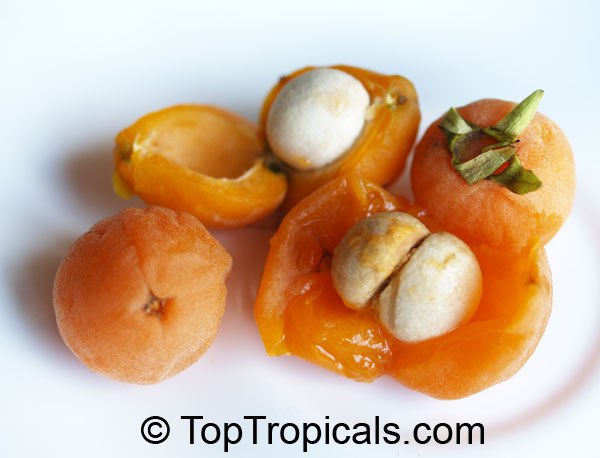
Pitomba, Eugenia luschnathiana - The Tropical Apricot Tree fruit

Pitomba, Eugenia luschnathiana - The Tropical Apricot Tree fruit
- 🍑 Looking for a small, ornamental fruit tree with big flavor? Pitomba (Eugenia luschnathiana) - The Tropical Apricot Tree - is a Brazilian gem that's as beautiful as it is delicious.
- 🍑 This slow-growing evergreen reaches 15-20 feet, with glossy dark green leaves and a striking light brown trunk. In spring, it bursts into white and yellow flowers, followed by apricot-colored fruits ripening from May to July.
- 🍑 The fruit is juicy, aromatic, with a flavor and texture similar to apricots. Rich in vitamin C, minerals, and dietary fiber, Pitomba is perfect eaten fresh or turned into jams, jellies, and juices.
- 🍑 Pitomba grows best in full sun, likes acidic soil, and appreciates regular water and feeding. Whether in the ground or in a pot, it’s a stunning and fruitful addition to your edible landscape.
- 🍑 Why grow Pitomba?
🟡Unique tropical fruit with apricot-like flavor
- 🟡Beautiful, compact tree for small yards or containers
- 🟡Fruits in 2–3 years from seed
- 🟡Cold-hardy to the upper 20s (°F) once mature. Grows in USDA zones 9–11 or indoors with winter protection
- 🟡Traditional medicinal uses in Brazil for colds and digestive health
🛒 Buy Pitomba to add a small fruit tree with big flavor to your yard
#Food_Forest #Fun_Facts #Discover
🔴 Join 👉 TopTropicals

